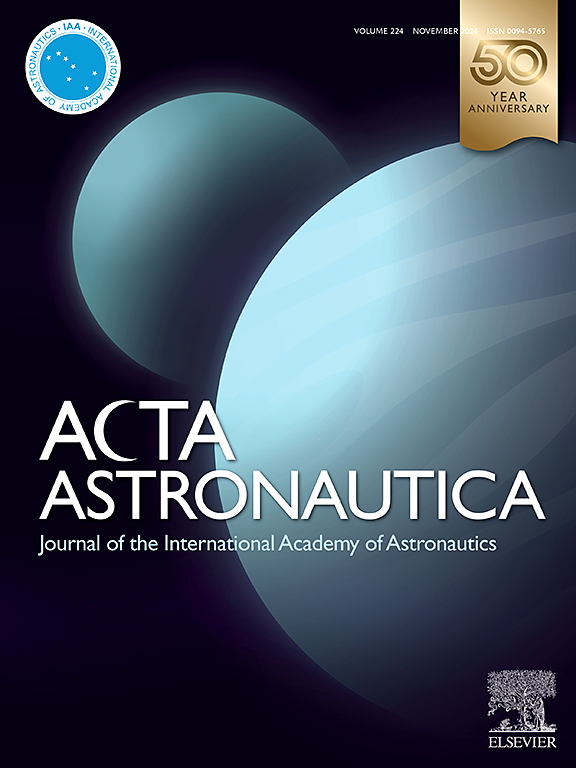A study from aviation to suborbital point-to-point transport and tourism to orbital tourism
IF 3.1
2区 物理与天体物理
Q1 ENGINEERING, AEROSPACE
引用次数: 0
Abstract
The purpose of this paper is to investigate the sustainability of space point-to-point transport and tourism based on its current development status and referring to the development history of aviation tourism. This study focuses on the following major points: (1) futuristic (suborbital and orbital) travel vs. traditional (aviation) travel, (2) infrastructure in suborbital and orbital tourisms vs. aviation tourism, (3) market demand vs. supply availability, (4) technology maturity vs. risk assessment, (5) development cost vs. ticket price (affordability), and (6) impact on the environment. In suborbital space tourism, the Virgin Galactic has completed seven commercial spaceflights (Galactic 1 to 7) from June 29, 2023 to June 8, 2024. Also, the Blue Origin has completed seven commercial spaceflights (NS-16, NS-18 to −22, NS-25 to −26 and NS-28) from July 20, 2021 to November 22, 2024. On the other hand, in the orbital space tourism, seven space passengers travelled eight times to the International Space Station (ISS) from 2001 to 2009 through the arrangements of Space Adventures along with Russian Roscosmos and Energia Corporation. On June 7, 2019, NASA announced a plan to open the ISS to space tourism. From September 16, 2021 to May 21, 2023, four commercial spaceflight missions have been made: all-civilian crew Inspiration4 mission, Ax-1, Ax-2 and Ax-3. Referring to the aviation tourism development history, the current space tourism status is mostly like its status at late 1950s. The creation of jet aircraft and the airline deregulation in 1978 can be considered as the two major watersheds from “adventure” to “prosperity” to “complete popularization” of the commercial airline industry, the passenger experience and the aviation tourism. At the civil aviation “adventure” stage in early 1940s, flying was very expensive and discomforts. Only business and wealthy travellers, a tiny fraction of the traveling public, could afford to fly. The current stage of space tourism is “adventure”, might mean it needs 20 more years to enter the “prosperity” stage and then the “popularization” stage. But there are many infrastructures still need be established such as: the space tourism industry chain, the legal and regulatory issues, the criteria for passenger screening and training, the insurance issue, the space port, the space traffic management and control, etc., etc. However, suppose we were standing at 1950s to outlook and prospect the civil aviation industry, the sustainability of space tourism is expectable based on the current development status.
求助全文
约1分钟内获得全文
求助全文
来源期刊

Acta Astronautica
工程技术-工程:宇航
CiteScore
7.20
自引率
22.90%
发文量
599
审稿时长
53 days
期刊介绍:
Acta Astronautica is sponsored by the International Academy of Astronautics. Content is based on original contributions in all fields of basic, engineering, life and social space sciences and of space technology related to:
The peaceful scientific exploration of space,
Its exploitation for human welfare and progress,
Conception, design, development and operation of space-borne and Earth-based systems,
In addition to regular issues, the journal publishes selected proceedings of the annual International Astronautical Congress (IAC), transactions of the IAA and special issues on topics of current interest, such as microgravity, space station technology, geostationary orbits, and space economics. Other subject areas include satellite technology, space transportation and communications, space energy, power and propulsion, astrodynamics, extraterrestrial intelligence and Earth observations.
 求助内容:
求助内容: 应助结果提醒方式:
应助结果提醒方式:


